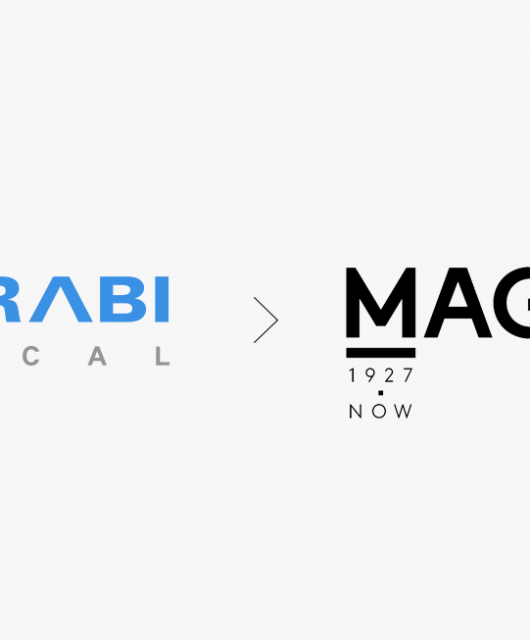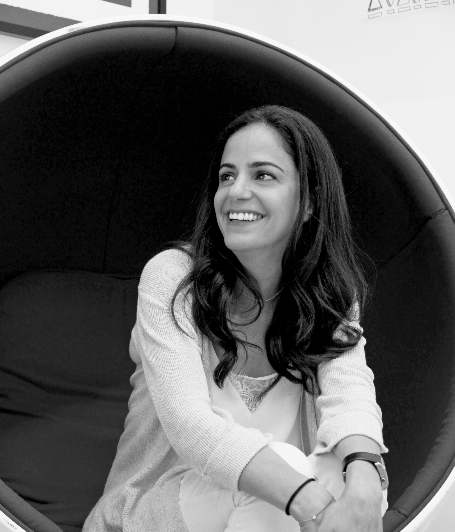Technology Is Throwing Retailers A Lifeline In Covid-19. Will They Grab It?
By Scott L. Ellis, Retail and Consumer Industry Lead, IBM Middle East and Africa
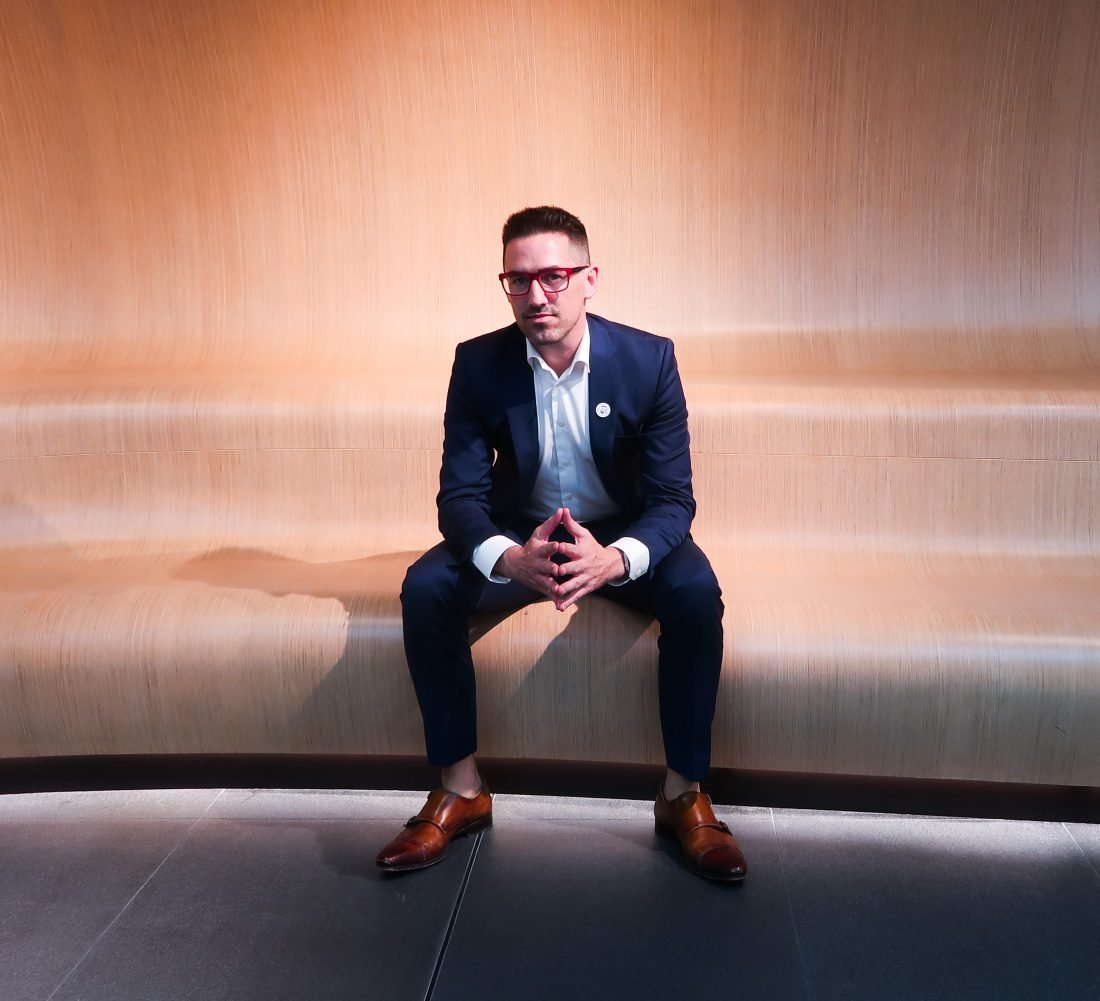
Imagine being able to try on a pair of glasses without going to a store or even holding the actual glasses — simply by taking a selfie with your smartphone. That is exactly what Warby Parker customers can do, with what is referred to as Augmented Reality (AR). In Macy’s department stores, customers are given the ability to see how a piece of furniture fits within their own unique home before making an expensive purchase, using Virtual Reality (VR) headsets.
The technology behind these enhanced experiences are grouped under the name “Extended Reality” (XR) and they influence customer shopping preferences, how companies interact with their customers, and how companies think about their brands. Within XR, there is a full spectrum of enhanced digital and physical experiences: augmented reality (AR), virtual reality (VR), and mixed reality (MR). AR, in particular, is already prevalent, and you’ve probably experienced it through Instagram or Snapchat where you can overlay your photos and videos with wacky-face filters. Or you’ve used services like Wanna Kicks, which puts virtual versions of footwear on your feet so you can see what they actually look like if you were to wear them – from any angle.
This blending of the physical and virtual worlds instils greater consumer confidence and shortens time to purchase, both contributing to an enhanced customer experience. XR also helps reduce product returns for the retailer, creating cost savings potential for retailers on shipping and other processing costs. In the home furniture example, Macy’s significantly reduced product return rates to for these VR-assisted furniture purchases.
These technologies have been around a while, so why write about them now? Well, with the global Covid-19 pandemic impacting day-to-day life, consumers are having to adapt to the necessity and convenience of discovering, researching and purchasing online. Hence, many retailers are looking to harness the immense potential of digital experiences like XR that bridge existing and newly required online and offline shopping experiences more effectively and minimize the need for store visits and human contact. According to data from Facebook AR partner, Vertebrae, in the wake of Covid-19, retailers using AR enjoyed a 19% spike in customer engagement and a customer conversion rate increase of 90% for customers engaging with AR versus those that did not.
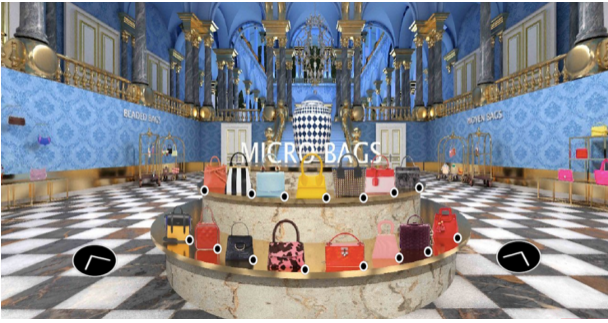
Retailers can use XR to link the convenience of shopping from home with the ability to inspect, explore and assess products on a store shelf. This offers a comfortable middle ground for consumers who want to bring the retail experience closer to home, either out of personal preference or due to a need for contactless shopping solutions. AR allows new modes of storytelling and creative expression possible with experiences unfolding in both our homes and public spaces, at a time when physical retail spaces are being reconfigured for social distancing and maximum safety. Introducing new and alternate perspectives, augmented reality allows consumers to bypass these challenges, and changes the way they tell, share and even remember stories.
Yes, this may be a new way of shopping for many and it could be argued that consumers would struggle in this environment to find the information they need, without a human sales assistant to answer their questions. To supplement the new experiential retail environments, retailers can also give customers direct access to AI assistants via integrated chat facilities instead of recruiting or relying on human call attendants. These AI assistants enable customers to interact with retailers’ complex inventory management and pricing systems and serve themselves with the information they need, instead of having to wait for a sales associate to become available, which is key when many customers visit the virtual store at the same time.
This is a strategy employed successfully by Etisalat Misr, one of the leading telecom companies in Egypt, who turned to IBM to introduce its first AI virtual assistant in order to transform its customers’ experience. The new virtual agent is powered by IBM Watson Assistant, IBM’s conversation AI platform delivered on IBM public cloud, and will help Etisalat meet the evolving expectations of its customers for more personalized experiences.
The virtual assistant is able to ingest and comprehend massive amounts of data and learn from previous interactions to provide real-time responses to customer inquiries and requests in both English and Arabic. Etisalat customers will be able to access the virtual agent on their preferred channels 24 hours a day, allowing the company’s resources to focus on more complex issues that require staff intervention. Amr Fathy, Vice President, IT, Etisalat Misr stated “through the Watson powered chatbot, we managed to provide distinguished customer experience while minimizing the operations’ cost during the pandemic outbreak by enriching our chatbot with information about COVID-19, means of protection and useful precautions tips, as well as dynamic updates on figures of the daily cases.”
AI assistants can also help customers find products more easily, increasing customer satisfaction and reducing wasted time and frustration. They can also provide real-time advice backed by relevant recommendations, increasing engagement and encouraging cross- and up-selling. When Vodafone UK used IBM Watson to deliver TOBi, the commerce-enabled chatbot that helps people buy new phones and SIM only plans, they enjoyed a conversion rate +100% compared to their website, a usability score of >90/100 and transaction time -50% compared to website (with abandonment rates markedly lower).
Someone who understood the potential of XR and related technologies to reimagine customer experience is Neha Singh, founder and CEO of Obsess. Obsess functions like a virtual mall, thanks to leading-edge augmented reality (AR) and virtual reality (VR) technology, reinventing the e-commerce experience on mobile to make it visual, interactive and contextual. Brands like Levis, Farfetch, Christian Dior and Tommy Hilfiger have all appreciated the potential in Obsess, using their services to establish virtual stores and sell out collections across multiple campaigns. I first met Neha in New York in 2018 on a retail technology assessment trip for my then employer, Al Tayer Retail. Now, in my new role at IBM, as I help my clients to envision what the world of retail needs to look like post-pandemic, I reached out to Neha and arranged an interview in order to tap into her insights and take on the future of retail. Below are some excerpts from our discussion.
Can you tell me about Obsess and your role in its evolution?
Neha: Well, I have an engineering and fashion background. Having studied at MIT and been an Engineer and Tech Lead at Google, my passion for fashion saw me take courses at Fashion Institute of Technology (FIT) in New York. A couple of semesters showed me that fashion design wasn’t going to be my future and I should focus on the tech side of fashion. At ecommerce startup, AHAlife, I worked in a team trying to create differentiated ecommerce experiences, but I started to realise that the majority of ecommerce platforms were indistinguishable, each looking like a database on a webpage. Despite significant back-end innovation, front-end user experience had been neglected for years.

I moved to Vogue, where I was the first tech hire and launched all Vogue’s US digital properties, and there I worked with a lot of luxury brands. Regardless of how many millions of dollars they were spending on unique and memorable runway shows, I could see they were struggling to differentiate their online presence and this is ultimately where the customer engaged them and how experience was measured.
Some time after that, I tried on a Virtual Reality (VR) headset and was totally blown away. I immediately saw the potential for application in retail because I personally hated the standard online shopping experience and didn’t always have time to go to stores. This was the genesis of Obsess in my mind. Our mission is to change ecommerce and the online shopping experience. My team worked to create a platform that would work today, on your phone, without any VR helmets or unique hardware, and bring this experience to both brands and consumers in an accessible way.
How was Obsess revealed to the world?
Neha: Our web-based platform went live in mid-2018 with Farfetch’s Middle East launch being our first venture – so the UAE actually witnessed another world first! Through Obsess, Farfetch were able to offer their customers Experiential Ecommerce, meaning they could experience the brand and the product in ways that were not possible before. For Farfetch, we did 5 luxury boutiques from different parts of the world, including Macau and New Zealand, so a customer could be in Dubai and virtually shop in a boutique location on the other side of the world.
How have other brands and their customers reacted to your offering?
Retailers really love that we can easily take an existing physical retail environment they have invested in branding and make this available online. This means it reaches more consumers and in effect increases the ROI on their initial store investment. Recently we launched a virtual perfume store for Christian Dior based on their flagship store in Paris. Customers can visit it online from anywhere in the world. For Tommy Hilfiger, we have created 4 virtual stores over the last year and these have pushed boundaries further and further each time we worked with them. The first store was based on an existing physical pop-up store which we replicated, allowing Tommy to keep the experience alive after the physical store closed and to reach a much wider audience.
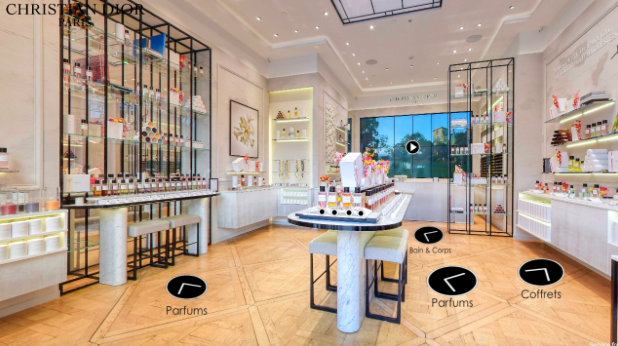
What have been some of the more interesting experiences you have had with clients?
Neha: With Tommy Hilfiger, their Fall 2019 runway show was going to be held at the historic Apollo Theatre in Harlem, New York. They wanted to hold a virtual event that replicated the experience and location, live at the same time. We recreated the Apollo Theatre and the runway show set as a virtual environment, and on the night projected the show on screens within the virtual environment. Visitors could go backstage, discover the product and make purchases. People from across the globe could suddenly be at the show and not just on the night, but for a month after the physical event ended. We followed this up with a virtual experience for Tommy Hilfiger’s Spring 2020 show in London where they created three unique science fiction style virtual environments for each of their three collections.
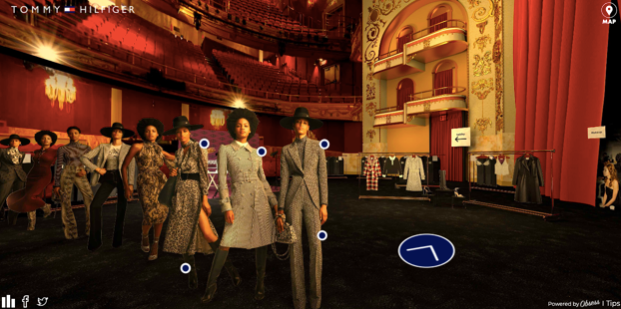
How important to your clients are the insights you gain from visits to your virtual stores?
Neha: We can collect data and insights regarding all visitor interaction within the store, where they are going in the store, how much time they are spending, what products they are clicking on, pretty much every single action taken. We often see consumer engagement with virtual stores increasing as we do more stores with a client, because we are able to use the insights we gain to better design the environments each time including layout and flow of the experiences. All of this data is available to our clients from the time the virtual store goes live.
Has Covid-19 had an impact on the relevance and attractiveness of Obsess to retailers?
Neha: Yes. In the last couple of months, the use case of creating an online version of the physical store has really taken off because people cannot safely visit the actual physical store in person. For our clients, it has given them renewed focus on the potential of their virtual stores and the features we provide. For example, a customer can discover an outfit through the virtual experience (using VR) and then using AR, project the outfit into their home environment using the camera on their phone.
Because ecommerce and virtual support is integrated, they can seamlessly go on to purchase or ask for help, without visiting a store or making physical human contact. Our clients have also realized how easy it is to change and tailor the merchandising, for example, different products for different timings of the day. Beyond that, we are getting a lot of interest from brand event planners who have seen the opportunity with our virtual environments when physical events are not possible due to Covid-19. We already have a significant pipeline that we are in the process of delivering now.
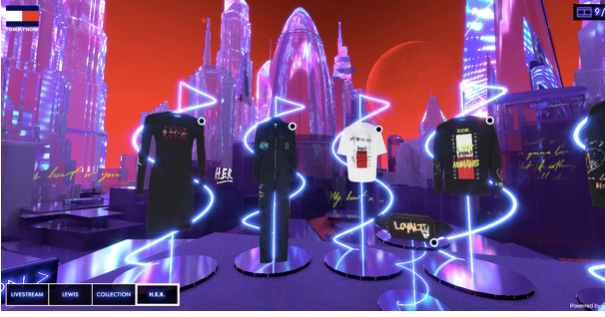
Pre-Covid 19, what were the new developments that you were working on? Have these changed?
Neha: More and more we were moving beyond just replicating an existing physical store virtually and have been working with brands and their designers to create whole new virtual store and event environments from scratch. With no physical restraints such as defined walls or pillars, brands have a blank digital canvas to create unconstrained, dynamic new experiences. Following the Covid-19 pandemic, this becomes even more relevant to our customers. As mobile becomes more powerful and 5G more prevalent, we will be able to create even more engaging virtual opportunities. And as younger consumers start to engage with brands, this is a generation who have grown up well-versed in XR style gaming and experiences and they expect engagement to be predominantly visual. They are comfortable with 3D and 360 degree environments and the alternative of static ecommerce environments feels stale to them.
Obsess is a great example of an organization realizing XR’s promise. To ignore the implications of XR would be akin to ignoring the advent of online shopping and the disruptive transformation it caused. I personally believe XR could be as disruptive to retail as the web or mobile was. However, the business and brand implications for XR technologies directly affect the very core of an organization’s digital reinvention strategy.
To succeed with XR will rely on an organization’s infrastructure, data, and cloud capabilities, as well as a clear vision for the design of improved customer and employee experiences. Despite the challenge this presents, retailers need to appreciate that consumer behaviour changes caused by Covid-19 will not revert back automatically if at all and relying on malls, stores or ecommerce sites alone will not win the battle for the consumer. IBM Watson for Retail can help to alleviate the challenges by creating step-by-step walkthroughs of routine workflows such as product returns, freeing human sales associates to focus on higher-value tasks.
Watson Assistant’s conversational AI platform can provide customers fast, straightforward, and accurate answers to their questions, across any application, device or channel. By addressing these common customer inquiries, it reduces the cost of customer interactions, helping your agents focus on complex use cases – not repetitive responses. Most chatbots try to mimic human interactions, frustrating customers when a misunderstanding arises.
Watson Assistant is more than a chatbot. It knows when to search for an answer from a knowledge base, when to ask for clarity and when to direct users to a human. And since it can be deployed in any cloud or on-premises environment – smarter AI is finally available wherever you need it. It will also help to triage customer service when stores are busy and when physical environments play a bigger role, it can empower sales associates, warehouse teams and managers to find information and make more informed decisions quickly.
Ultimately, it will take brave retailers to see this as an opportunity to realise the true value of XR and AI and it will be these retailers who reimagine and close gaps in the post-pandemic customer journey. It will need those brave retailers to also be wise enough to know where they need to partner up to achieve this. Partnering is necessary to ensure they effectively disrupt themselves, accelerate the change and identify the right digital business transformation opportunities to quickly progress from ideation through to design, prototype and implementation.


